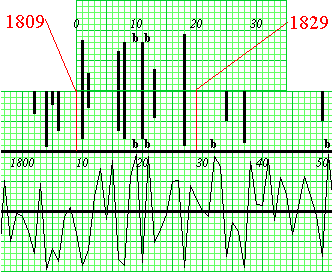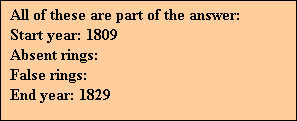| When you try skeleton plotting for yourself, you can find the start and end dates: | |
|---|---|
|  |
| When you try skeleton plotting for yourself, you can check your answers: | ||
|---|---|---|

|
| 
|
Introduction | Dendrochronology Applications | Crossdating Application | Ring-Growth Anomalies
Relative Scale | Sensitivity-Complacency | Skeleton Plotting | Master Chronology
Pattern Matching | Finding the Dates | Absent/False Rings | Try Skeleton Plotting for Yourself!
Laboratory of Tree-Ring Research